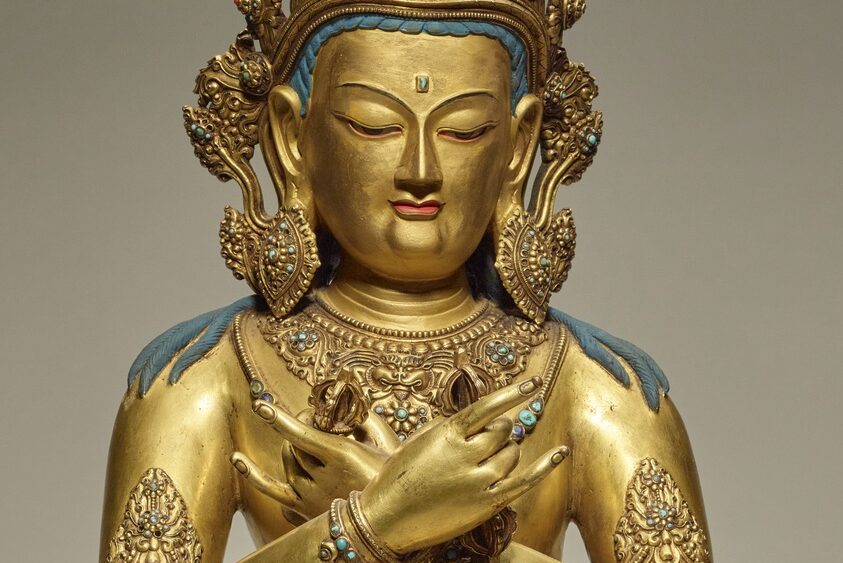
Blog
Fresh perspectives on art, life, and current events. From deep dives to quick takes to insightful interviews, it’s the museum in conversation. Beyond the walls. Outside the frame. Around the world.
The Latest

Mia Is Yours: A Look Inside Programming with Anna Dilliard
By Anna Dilliard
I often get asked—by folks in my life, by people interviewing me, even by people I’m interviewing—what my favorite part of my job is. I always answer with the same thing: the opportunity to ensure our visitors see themselves represented at Mia. While the museum’s collection is encyclopedic, the works on ...

How Miniature Paintings Reveal the Vast World of Indian Art
By Coco Banks
One of the works now on view in “Painted Poetry: Art of the Rajput Courts” (Gallery 212) is Shiva and Parvati with Companions, painted around 1810 in northern India. It’s brilliantly colorful and full of minute details—and only slightly larger than a sheet of paper. The painting is one of several ...

What I learned: Photographer Pierre Ware on his fellowship at Mia
Pierre Ware was selected for Mia’s first Visual Resources DEI Fellowship in the fall of 2023. Over the next twelve months, Ware immersed himself in the museum, shooting everything from art objects to ad campaigns. Dan Dennehy, Mia’s longtime Head of Visual Resources, initiated the fellowship in partnership with Mia’s DEI Division, and says the ...

The Mia Staff Art Show Returns
Staff art shows have become a feature of many museums now, and for good reason: many museum staffers are artists, professionally or otherwise, putting their creativity to work and being inspired in return. Mia’s annual staff art show, “Artists at Work,” is up through April 13 in the museum’s Community Commons. Here we present a ...

The Many Lives of the Moulin Rouge
By Taylor Bye
When I was 14, I was invited to a sleepover birthday party. The birthday girl decided we should watch Moulin Rouge!, the Baz Luhrman movie musical from 2001, starring Nicole Kidman and Ewan McGregor. Settled on the floor in our pajamas, we entered a world of campy decadence—Paris in 1899—set to ...

2024 Impact Report: How Mia is inspiring wonder and changing lives
As Chief Diversity and Inclusion Officer Virajita Singh put it, “The Minneapolis Institute of Art Impact Report celebrates fostering connections: from the global to the local, the past to the present, across generations and identities. We are the ‘people’s museum’, where everyone is welcome, always.” The 2024 Impact Report offers an overview of how we ...

Mia’s 2024 Holiday Gift Guide
We’ve got our favorites, our visitors have theirs—here’s that Venn diagram of unique holiday gifts we can all agree on, at all price points, for all kinds of people, from The Store at Mia. Use it to plan your gifting, or share it with others as your wishlist. Come by on November 29 for Black ...

Honoring Hispanic Heritage Month with classic photography
Esther Parada’s trip to Bolivia in the 1960s as a Peace Corps volunteer marked the beginning of her artistic career as a photographer. While teaching art at the university in Sucre, she captured the expressive faces, richly patterned textiles, and harsh light of the altiplano as a way to retain and memorize the experience of ...
The Tibetan Sand Mandala: A Short History
By Rob Bedeaux
As part of the ceremonies leading up to the opening of the Tibetan Buddhist Shrine Room: The Alice S. Kandell Collection on September 14, 2024, the Minneapolis Institute of Art (Mia) will host several Buddhist nuns from the Jangchub Choeling Nunnery in India. During their visit, the nuns will create a ...

A shrine to understanding: How a major collection of Tibetan religious objects came to Mia
In her chic apartment on New York’s Upper East Side, Alice Kandell likes to retreat to a room where flickering candles softly illuminate gilded sculptures inlaid with coral, turquoise, and other semiprecious stones. The walls are hung with exquisitely painted images of serene deities and ferocious guardians. A fine silk canopy floats above an altar ...
